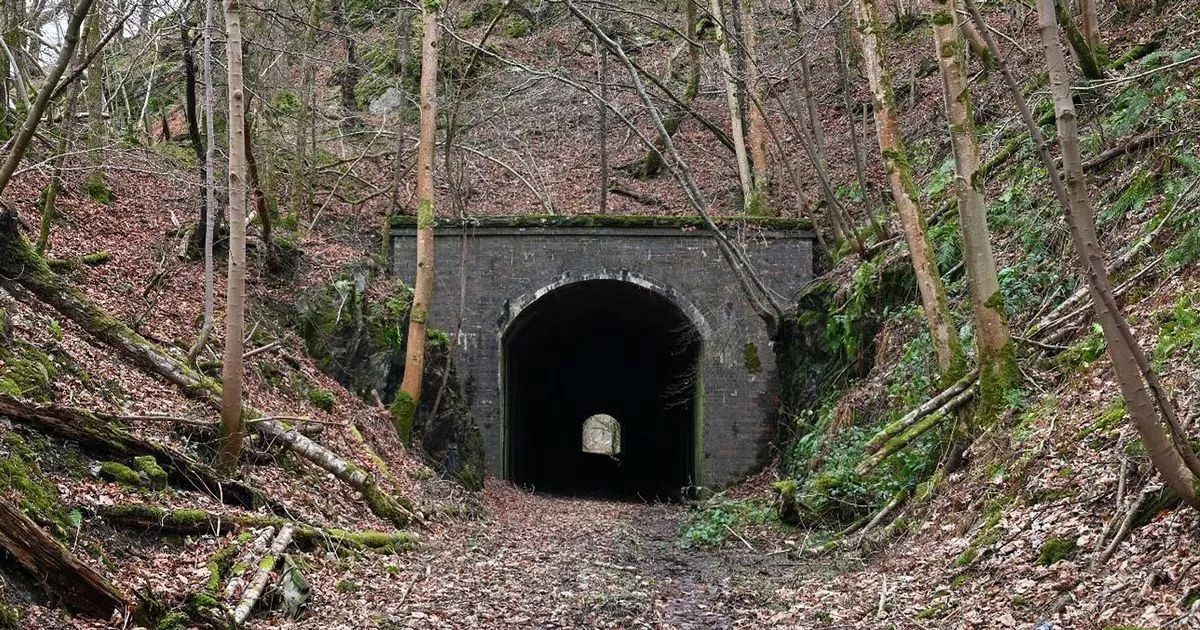By Andrew Forgrave
Copyright dailypost

As the train approached the gloom of Ty-tyn-y-graig’s brick-faced railway tunnel, the prisoner made his move. John Williams, a vagrant and ex-con, turned to police constable Thomas Jones and pleaded to be released from his painful handcuffs.
PC Jones should have known better: nine days earlier, he’d been assaulted by Williams, who was subsequently sentenced to three months’ hard labour at Ruthin gaol. As the arresting officer, it was his task to escort him to prison on the 4.41pm train from Bala.
On June 7, 1879, the Caernarvon & Denbigh Herald reported: “The officer, with a display of kindness which was evidently undeserved, complied with this apparently reasonable request.” For his kindness he was dealt a “heavy blow” by Williams, enabling his to break free.
Within a moment he’d disappeared through the carriage door and out into the dark tunnel, the hapless copper’s helmet tumbling out after him. The train, observed the newspaper, was “moving at a rapid speed” at the time.
When the bare-headed officer returned to the scene, having alighted at nearby Llandderfel station, he expected to find blood on the tracks. To his surprise, the prisoner had escaped apparently uninjured.
Williams, it was later reported, was well acquainted with this part of the line: perhaps he had planned it all along? A large manhunt was launched and the story of the “daring escape” filled column inches around Britain. Join the North Wales Live Whatsapp community now
Several weeks later he was recaptured in Wrexham, still limping from a foot injury sustained when leaping from the carriage. “The wonder is that he was not more hurt, as the train was going fast and the tunnel is narrow,” reported Mid-Surrey Times on June 28.
Ty-tyn-y-graig Tunnel has four trackside refuges – recessed alcoves in the walls designed to shelter workmen when a train passed. Did Williams fling himself into one of these?
Eerily, the outline of a person appears to be visible in one refuge, as if sheltering from trains that no longer run.
The tunnel, on the former the Ruabon-Barmouth line, is not especially long at around 480ft. But it’s long enough for mischief-making.
Almost a century after the “daring escape”, pupils travelling to school in Bala, in the early 60s, were again taking advantage of the darkness.
Online, a former student recalled: “As many other first-year pupils will attest, we used to get hammered by the older pupils in this tunnel on each journey.
“There were no corridors on the trains and they used to take the bulbs out, so you never knew who hit you in the dark. Simple times!”
Inevitably, the railway fell victim to the 1960s Beeching cuts. It actually closed ahead of the schedule after River Dee flooding breached the line near Llandderfel in late 1964.
A gap in a stone wall on the B4401, not too distant from the historic Bryntirion Inn, leads to a flight of vegetation-covered steps and down to where the platforms once were, next to a road overbridge.
Nothing much remains of the station, other than a couple of derelict building stuffed with litter. But the track remains accessible.
It was here that, in 1889, Queen Victoria arrived on the Royal Train with her Scottish gillies. For the occasion, the platform was raised and lengthened, and a flower-decked awning was erected in case the Welsh weather misbehaved.
The Queen was entertained at nearby Pale Hall, owned by Sir Henry Robertson, chairman of the original railway company which built the line.
During her trip, she surprised onlookers by thanking them in Welsh.
Pale Hall had a telephone link with the station’s signal box. The estate wasn’t the only one to receive preferential treatment: nearby Crogen Hall Halt, across the river Dee, had a private halt built on the line.
The idea seemed sound but, as it required a cross-river ferry trip each way, the private station lasted merely a decade.
Last year the tunnel – a mile towards Bala from the station – was explored by Disused Railway Tunnels UK (DRT UK). It was the 121st railway bore to be explored by the blogsite, which this week completed its 150th tunnel visit.
DRT UK noted its mixed construction – half the tunnel is lined with masonry, the other half is simply exposed rock – and marvelled at its apparent futility.
“Looking at the hillside above, you wonder why they didn’t just build a cutting instead,” said DRT UK. “Or alter the alignment to skirt round the hillside slightly and run alongside the bank of the River Dee.
“The trackbed either side is absolutely straight as far as the eye can see. It’s a real wonder to look at – the original fences still mostly intact, some fashioned from redundant pieces of railway track. Another fantastic piece of industrial history largely forgotten in North Wales.”
Steam enthusiasts dream of reopening the line one day – probably to Bala rather than back to Corwen. It’s extremely unlikely. In glorious countryside, a long-distance walking trail has also been mooted.
For now, the redundant line remains in relative obscurity, a map oddity recalling a golden age of travel, its tunnel is a haunting reminder of past misdemeanours. Sign up for the North Wales Live newsletter sent twice daily to your inbox
Find out what’s happening near you



